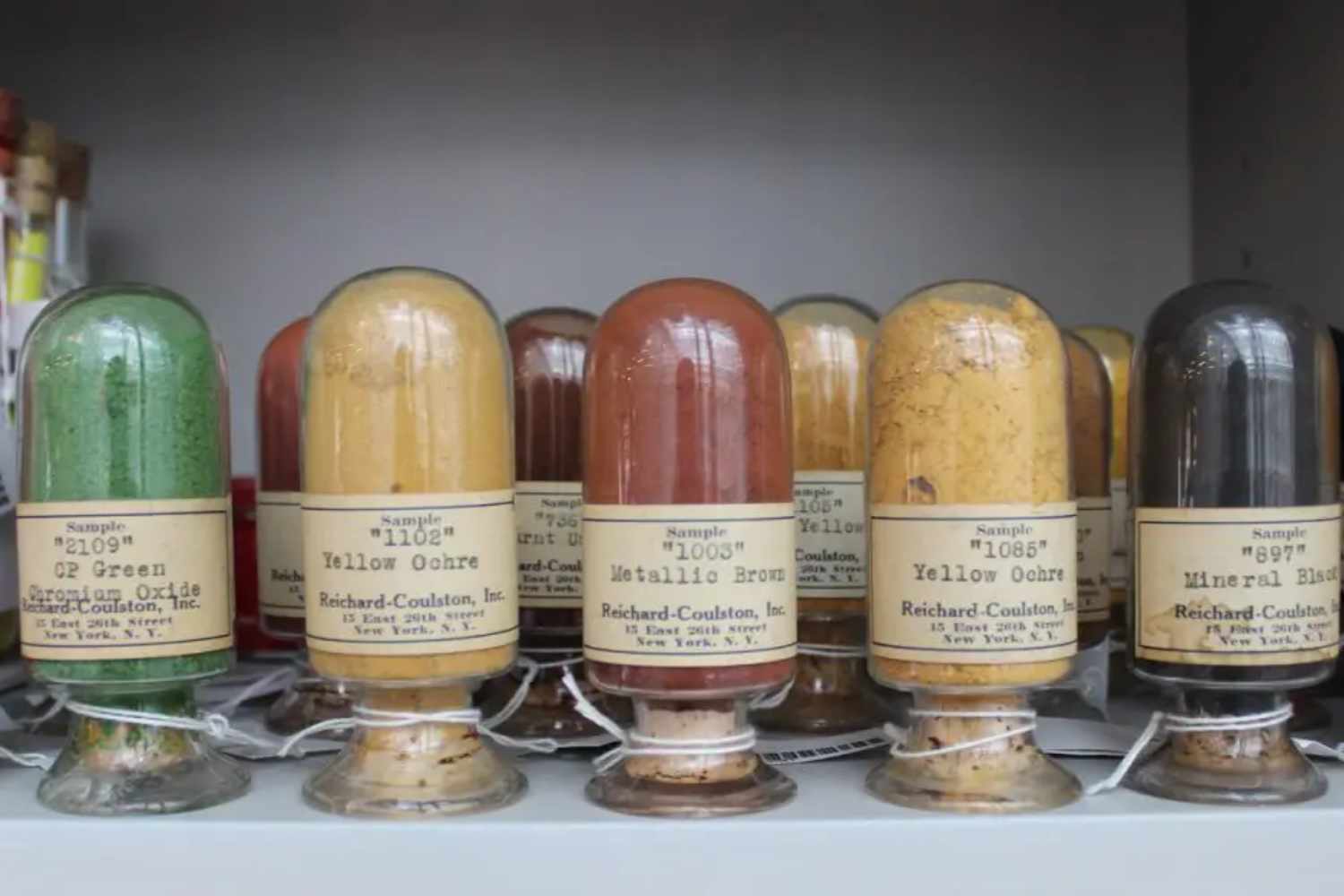Harvard's Forbes Pigment Collection holds over 2,500 rare pigments, uncovering stories of art, science, and sometimes death. A kaleidoscope of history in every jar.

@Harvard Institute
At first glance, it might look like a cabinet of curiosities. Shelves of neatly labeled glass jars, each containing a handful of powder in a different hue—more than 2,500 pigments in total. But this isn’t just a collection of colors. It’s a scientific archive, a cultural time machine, and in some cases, a reminder that beauty can carry a dark price.
This chromatic treasure trove is the Forbes Pigment Collection, housed at Harvard University’s Straus Center for Conservation and Technical Studies. It’s a living legacy started by Edward Forbes, the pioneering art historian and former director of the Fogg Art Museum, who led the institution from 1909 to 1944.
Edward Forbes: the pigment detective before it was cool
Long before “CSI” became a cultural obsession, Forbes was on a mission that resembled crime scene investigation—only with oil paintings instead of evidence bags. He traveled extensively, collecting pigments from all over the world. His goal? To compare these samples with those found in Renaissance artworks and determine their authenticity. A subtle blue in a Raphael, a dusty red in a Botticelli—Forbes believed that color could be a key to truth.
And he wasn’t wrong. Over time, his collection evolved into a scientific resource for art conservators, researchers, and even forensic investigators.
Science meets color: from raman spectroscopy to ancient resins
Today, the collection is curated by Narayan Khandekar, who serves as the director of the Straus Center. His job? Equal parts chemist, detective, and historian. Khandekar uses advanced tools like Raman spectroscopy, electron microscopy, and chromatography to identify the chemical makeup of pigments. The results can reveal not only a painting’s materials but also its origin, history, and potential for forgery.
“Every pigment has a story,” Khandekar explains—and some of those stories are deeply unsettling.
The unsettling truth behind beautiful colors
Let’s start with Mummy Brown. The name isn’t poetic metaphor—it’s literal. This pigment, popular in the 18th and 19th centuries, was made using resins derived from actual Egyptian mummies. Painters unknowingly brushed death across their canvases.
Then there’s Cochineal, a vivid crimson extracted from crushed insects, still used today in foods and cosmetics. Some colors, it turns out, come with more than just a shade—they come with ethical dilemmas.
But it gets darker. Cadmium Yellow and Emerald Green, once beloved for their intensity, are made from toxic heavy metals. And Red 254, a synthetic pigment discovered in 1974, famously helped expose a fake Jackson Pollock. Ironically, it’s not always the old pigments that carry the biggest surprises—sometimes it’s the modern ones that write headlines.
More precious than gold—and older than modern chemistry
Many of these colors were once more valuable than gold. Take ultramarine blue, for example. Originally sourced from lapis lazuli mined in Afghanistan, it was a pigment so rare and costly that only the wealthiest patrons could afford it in their commissioned works. Today, artists can use its synthetic twin, developed in 1826 thanks to a science competition aimed at democratizing color.
The collection also includes plant-based pigments, each with its own botanical origin story. There’s Quercitron, a warm yellow from black oak bark; Brazilwood, a reddish-brown once traded like spice; and Annatto, a vibrant orange derived from a South American shrub known as the “lipstick tree.”
Color as cultural archive
While many view these pigments through the lens of chemistry or conservation, the truth is more layered. Each jar represents a crossroad of trade routes, colonial history, art movements, and scientific progress. They are not just substances—they’re portals into how humanity has seen and shaped the world.
And while we now live in a digital age where color is endlessly editable, reversible, and instantly shared, Harvard’s collection reminds us of a time when creating color meant mining mountains, boiling bark, or, disturbingly, grinding mummies.
There’s a certain irony in that: today’s artists toggle between hex codes and Pantone swatches, but the real weight of color—its history, cost, toxicity, and wonder—still rests in those tiny jars in Cambridge, Massachusetts.
